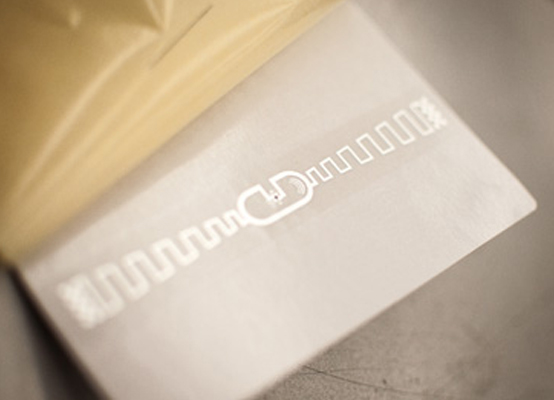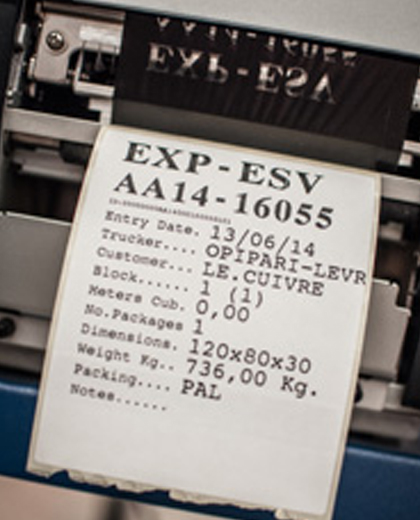


Identification system
radio frequency
Rfid systems use several frequencies that can be classified as follows:
The different frequency ranges have different characteristics and are therefore meant for different applications. In general, if the frequency increases, so does the reading distance and the quantity of data that can be transferred during the time unit reduces the capacity to resist operation conditions and costs. Low frequency tags use little power and are able to pass through non-metallic and liquid materials, but the signal for reading does not go beyond 30-40 centimetres. High frequency tags work better with metallic objects and can cover a distance of approximately one meter. Ultra high frequencies offer wider reading ranges and allow the fast transference of data, but do no pass through materials easily. The solutions with tags of 2.45 GHz are applied to telepass systems, dry ports and equivalents.
During our 35 years
of activity, we have
prepared our future
There are three types of Rfid tags: passive, battery assisted passive or active. Passive tags have no internal power supply and draw the power required to activate the circuits from radio waves sent by the reader that interrogates them and induces a current in the antenna. According to the Iso standards, LF and HF tags can be only passive, while UHF and microwave tags can be battery assisted passive or active as well. A battery assisted tag has a power supply which cannot power radio circuits, but additional devices such as temperature or movement sensors. Finally, active tags are powered by batteries offering a larger range to the radio signal and a longer reading distance. Active tags are more expensive than passive tags and are strongly recommended to trace means of transport of valuable goods at long distances.
Compared to barcodes and other identification technologies, the radio-frequency technology offers numerous advantages: Reading is not optical, does not require direct contact or line-of-sight scanning. Tags can be read simultaneously, work in dirty and polluted environments and withstand very hard (pollutant agents, thermal, chemical and mechanical stress) conditions. They are therefore, more durable. Compared to barcodes, tags contain more data; they can be rewritten and updated with new information. They can also work immersed in a fluid, inside the object to be identified or inside a container. Besides, barcodes identify only the lot number of a product, not the single item. Rfid tags, instead, contain the single and univocal serial number identifying each single product manufactured in the world. Rfid tags are more expensive than barcodes, but the benefit-cost ratio is generally favourable.


The research activity takes place in two ways.
Research is carried out in a dual modality. On the one hand, the traditional methodology to study cases allows the acquisition of data about the points mentioned above and therefore the empirical construction of the Italian situation profile.
On the other hand, the creation of analytical models (e.g. assessment of benefits, market quantification, etc.) allows extending the application of knowledge abstracted from cases and providing a quantitative approach to the main pieces of evidence.
More specifically, the Observatory aims at:
- Identifying the sectors where RFId technologies can be applied by studying the most significant cases implemented in Italy;
- Exploring the dynamics of diffusion of these technologies, understanding which the new sectors are where more investments are made in innovations, which are the success rates of tests and how current experiences are evolving;
- Evaluating, in each sector of application, the impact on the business process and the subsequent returns (of efficiency and effectiveness), without ignoring the main problems or difficulties met;
- Mapping the overview of supply in Italy, identifying the actors and their skills and offering precise and independent data about the market dimension in Italy;
- Expanding on the framework of the decision-making process of Italian companies in order to clarify which conditions (motivations, technology knowledge, support actors, barriers and risks perceived) influence on decisions, mainly in this phase of technology introduction;
- Contributing to the disclosure of precise but clear information related to standards about RF transmission as well as architecture/protocol;
- Identifying the main impacts of RFId applications in the social sector: safety, privacy and workers’ rights;
- Organizing a comparison with the international scene, also thanks to the consolidation of an international university network that enables the exchange of the most significant cases of the respective countries.

“RFId: Searching for Value” is the third report of the RFId Observatory of the School of Management of the Polytechnic university of Milan which contains the main results of the Research, 2007, conducted with the sponsorship of Assinform and the university foundation of the Polytechnic University of Milan, with the support of Hp, Indicod-Ecr, Microsoft, Mir, Siemens IT Solutions and Services, Asystel, Oracle, Rs Components, Tech Gap, Unisys.
The research is based on the analysis of more than 830 applications singled out in approximately 600 organizations and it is conducted with the specific aim of pointing out, one the one hand, the actual value deriving from RFId applications and, on the other hand, the main barriers – found in real cases – for the implementation of these applications, barriers that skilfully combined with process changes often turn out to be “false”.

